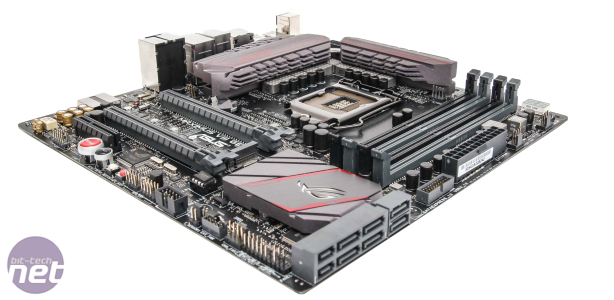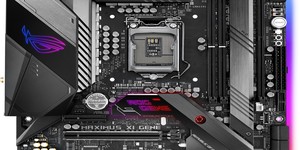
Performance Analysis
We're still gathering data for Z170 boards but we do at least have the Z170-Deluxe to compare the Gene against until we add more results to the graphs. The Gene actually fared a bit better in many tests at stock speed, with a small advantage in the PCMark 4K video editing test, Cinebench R15 and Unigine Valley. There wasn't a lot in it in the game tests, but then the vast majority are GPU rather than CPU-limited these days, although the Deluxe offered a slightly faster read speed with our M.2 SSD.Click to enlarge
Even though we loaded the XMP profile in the EFI on both boards without touching other settings, the Gene was much less power-hungry at load and idle than the Z170-Delxue - most likely due to the latter's extra features and larger PCB. Audio performance was practically identical to its sibling though, with some of the best results we've seen from a mainstream motherboard - bettered only by the older Gigabyte GA-Z97N-Gaming 5 that we looked at a while back. You'd have to step up to X99 to see anything significantly better and Asus has definitely laid down a benchmark with the Gene that will be tough to beat.
Once overclocked to 4.8GHz, our CPU performed slightly better in the photo editing test and Cinebench than with the Z170-Deluxe, despite using an identical clock speed, but the rest of the results were pretty much the same. Once again though, the Gene's low overclocked voltage, smaller PCB and shorter feature set saw it draw noticeably less power, both at stock and idle.
Click to enlarge
Conclusion
Thirteen months ago, the then new Maximus VII Gene cost £148, so the new kid on the block is definitely more expensive - £20 dearer in fact. That's a sizeable sum, but as our tests show, the new Gene is better in a number of areas. The onboard audio is significantly improved, rising from a mid-table result to nearly a chart-topping position, despite being re-integrated onto the PCB. You also have the benefit of the Z170 chipset's ability to take advantage of the latest super-fast SSDs plus Asus has revamped and tweaked many software features such as RAMCache and Keybot, and you can now update the BIOS over the internet too, direct from the EFI.The previous Gene also had illuminated parts and seeing as the Gene's siblings now include RGB lighting, we can only say that it's a shame this feature didn't find its way to the Gene, especially as the Hero, which does include it, costs the same and sports extra features as well thanks to its larger size. However, we feel that Asus has certainly done enough to warrant the extra cost so if you're after a micro-ATX Z170 board, while we don't have much to compare it against at the moment, you definitely won't be disappointed with the latest mid-sized board to fly the ROG flag. In short, the Gene has rarely, if ever, disappointed and the Z170 incarnation looks set to continue that trend.


MSI MPG Velox 100R Chassis Review
October 14 2021 | 15:04










Want to comment? Please log in.